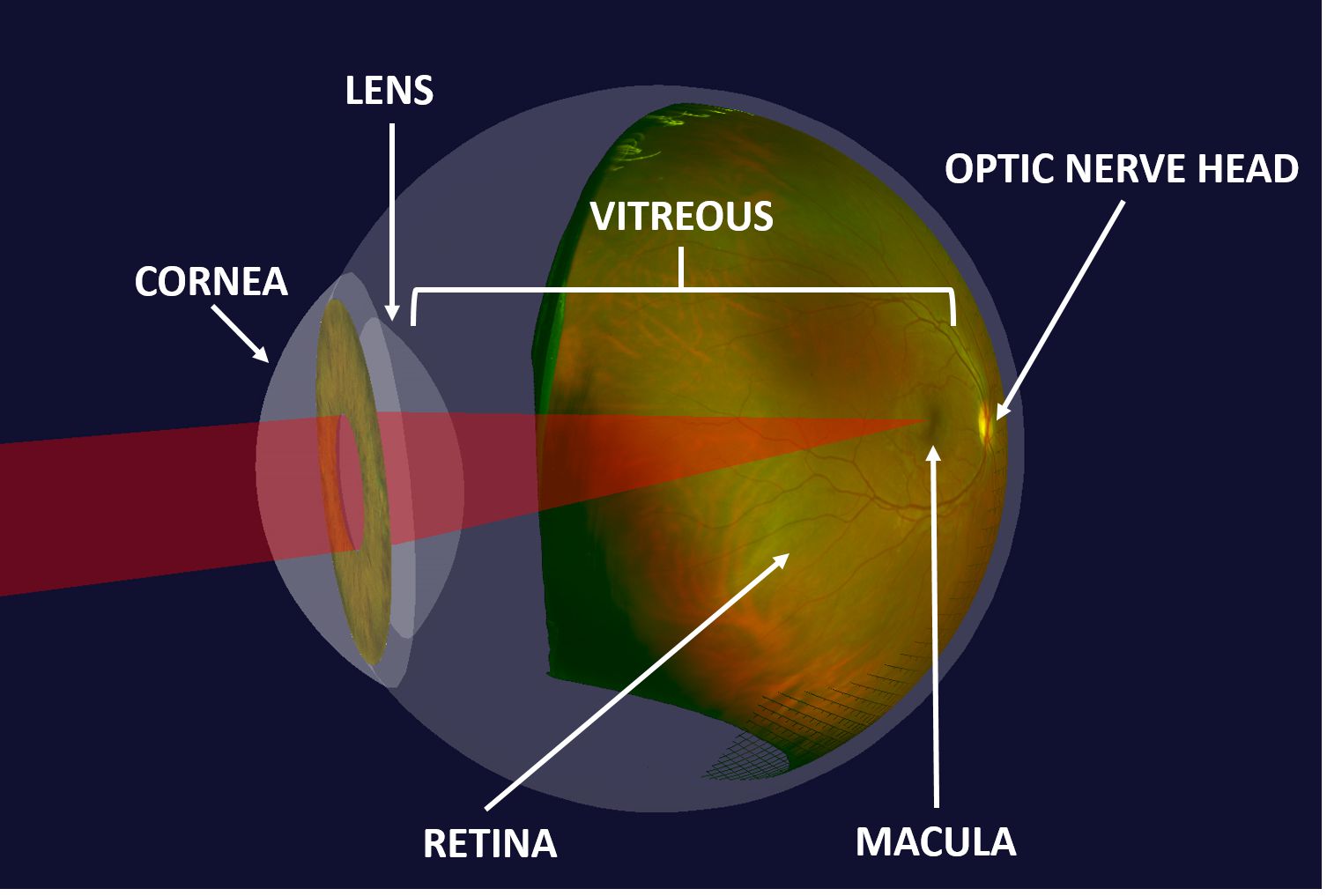How Our Eyes Work

Our eyes work in a similar way to a camera.
Our vision is the result of light reflecting from an object and entering the eye through a transparent front window called the cornea. This light then gets focused through a transparent oval-shaped magnifying lens and passes through a transparent jelly called the vitreous. The vitreous fills and maintains the eye’s shape.
After passing the vitreous, the light reaches a nerve tissue film coating the internal back wall of the eye. This wall is the retina. The retina interprets the light into an image and sends it to the brain via an optic nerve (similar to an electrical cord) so that the brain can “see” the image.
The central and most important part of the retina is called the macula. The macula is responsible for seeing fine details like watching TV, reading, driving and recognising faces by using highly sensitive photoreceptor cells.
Seeing images as crooked or distorted almost always specifies a problem affecting the macula. The main eye condition affecting the macula is age related macular degeneration (AMD) and is the leading cause of blindness in Australian adults aged 60 years and older.
Early detection and treatment of macular problems can save eyesight. Anyone experiencing the new onset of distortion in their vision should have their macula checked within a week. They can also test their eyes separately by covering one eye and using an Amsler Grid to test for distortion.
All parts of the eye in this pathway are important for maintaining good vision.
